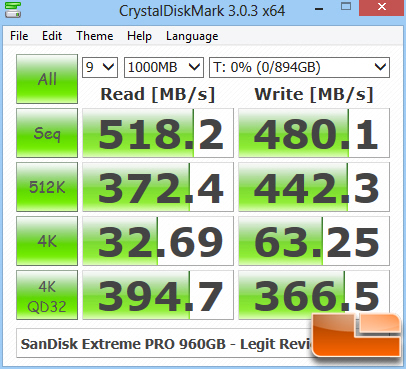
This enables the drive to reorder the reads so they're less random. The Q32T1 test leverages queuing: multiple read commands (up to 32) are sent to the drive before waiting for the results (and as soon as a result comes back, a new read is requested, maintaining a queue of 32 pending reads). That's for the RND4K Q1T1 read test (bottom left of your first screenshot), which is the ultimate random read test, with each read waiting for its results before getting to the next one. So the results of the benchmark are actually slightly better than theory! With 4K blocks as used by the benchmark, that's 228 KB/s, or 0.228 MB/s. Which in turn means a bit under 57 reads per second. That means that on average, reading a random block will take 17.6 ms (not counting command processing and the data transfer itself, but that's usually peanuts in comparison). Disks come in a variety of speeds, from 5400 RPM (revolutions per minute), which is quite standard for the smaller consumer 2.5" disks, up to 15000 RPM for high-end enterprise-grade disks.Īt 5400 RPM (which means 90 revolutions per second), it takes on average 5.6 ms for the right block to be under the read-write head. For this specific disk, it's 12 ms.Īverage random rotational latency is directly dependent on drive rotation speed. The platter needs to rotate until the right "sector" or block is under the read/write head ( rotational latency).Īverage random seek times are usually somewhere between 9 and 15 ms, depending on the disk. The head needs to be moved to the right "track" along the radius of the platter ( seek time). To read a random block on the disk, two things need to happen:

A hard disk drive is made of platters that turn at the specified speed, and read-write heads which move along the radius of the platter.


 0 kommentar(er)
0 kommentar(er)
